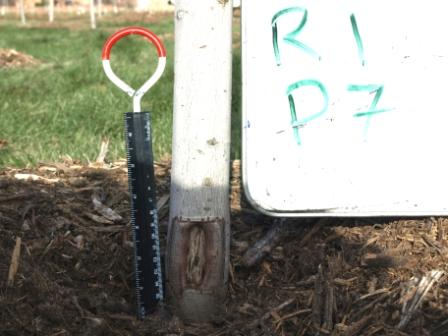Around my home I have gravel and hostas. Just perfect, as you might imagine, for lots of slug damage. This is where I do my work on slug remedies. And there are lots of remedies for slugs! One of the oldest of these remedies is beer. Almost any beer will be adequate (including alcohol free), but generally the darker the beer the better. When I first started testing different cures for slugs about five years ago one of the first ones that I looked at was beer. And when I first tried it…..well, see for yourself.
This is the way that I set up my first beer trap (for this test). There’s fine sand all the way around the trap and the trap is filled with Moose Drool (a nice beer — Suzanne, my wife — was actually a little irritated that I wasted a good Moose Drool when we had a Bud Light in the fridge — But I was only thirsty for half a beer when I set it out….and I don’t like Bud Light)
I set this trap up around 8 o’clock on a nice warm summer evening, the idea being that the next morning I could go out and see how many slugs approached the beer (by looking at the sand) and then see how many slugs the beer actually caught.

As you can see below we had quite a few slugs approach the beer (By my count about twenty). And guess how many dead slugs were in that beer?

If you guessed 20…you’d be wrong! There were no slugs in that beer. Why? Because this is a poorly designed slug trap! slug traps are best when they are made with something like a mason jar and that jar is buried up to the lip of the jar in soil. Then the jar should be filled up to within about an inch of the top with beer. If you fill it higher the slug will be able to just reach his head in and drink. In fact, after I set this trap out, I spent much of the evening watching slugs do just that — it was actually a little like watching old episodes of Cheers! I had names for the slugs and everything (like Norm and Frazier and that mailman guy whose name I can’t remember now…).
So slug traps are good — but only if they’re set up right!































